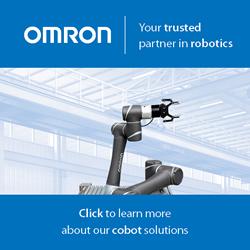Research aims to make artificial intelligence explain itself
Eight computer science professors in Oregon State Universitys College of Engineering have received a $6.5 million grant from the Defense Advanced Research Projects Agency to make artificial-intelligence-based systems like autonomous vehicles and robots more trustworthy.
CORVALLIS, Ore. - Eight computer science professors in Oregon State Universitys College of Engineering have received a $6.5 million grant from the Defense Advanced Research Projects Agency to make artificial-intelligence-based systems like autonomous vehicles and robots more trustworthy.
The problem is that the neural networks function as a black box. Instead of humans explicitly coding system behavior using traditional programming, in deep learning the computer program learns on its own from many examples. Potential dangers arise from depending on a system that not even the system developers fully understand.
The four-year grant from DARPA will support the development of a paradigm to look inside that black box, by getting the program to explain to humans how decisions were reached.
"Ultimately, we want these explanations to be very natural - translating these deep network decisions into sentences and visualizations," said Alan Fern, principal investigator for the grant and associate director of the College of Engineerings recently established Collaborative Robotics and Intelligent Systems Institute.
Developing such a system that communicates well with humans requires expertise in a number of research fields. In addition to having researchers in artificial intelligence and machine learning, the team includes experts in computer vision, human-computer interaction, natural language processing, and programming languages.
To begin developing the system, the researchers will use real-time strategy games, like StarCraft, to train artificial-intelligence "players" that will explain their decisions to humans. StarCraft is a staple of competitive electronic gaming.
Later stages of the project will move on to applications provided by DARPA that may include robotics and unmanned aerial vehicles.
Fern said the research is crucial to the advancement of autonomous and semi-autonomous intelligent systems.
"Nobody is going to use these emerging technologies for critical applications until we are able to build some level of trust, and having an explanation capability is one important way of building trust," he said.
The researchers from Oregon State were selected by DARPA for funding under the highly competitive Explainable Artificial Intelligence program. Other major universities chosen include Carnegie Mellon, Georgia Tech, Massachusetts Institute of Technology, Stanford, Texas and University of California, Berkeley.
-30-
About the OSU College of Engineering: The OSU College of Engineering is among the nations largest and most productive engineering programs. Since 1999, the college has more than tripled its research expenditures to $37.2 million by emphasizing highly collaborative research and innovation that solve global problems. Its a leader in signature research areas, including precision health, clean energy, resilient infrastructure and advanced manufacturing; and targeted strategic areas, including robotics, materials research and clean water.
Featured Product

Discover how human-robot collaboration can take flexibility to new heights!
Humans and robots can now share tasks â€" and this new partnership is on the verge of revolutionizing the production line. Today’s drivers like data-driven services, decreasing product lifetimes and the need for product differentiation are putting flexibility paramount, and no technology is better suited to meet these needs than the Omron TM Series Collaborative Robot. With force feedback, collision detection technology and an intuitive, hand-guided teaching mechanism, the TM Series cobot is designed to work in immediate proximity to a human worker and is easier than ever to train on new tasks.
